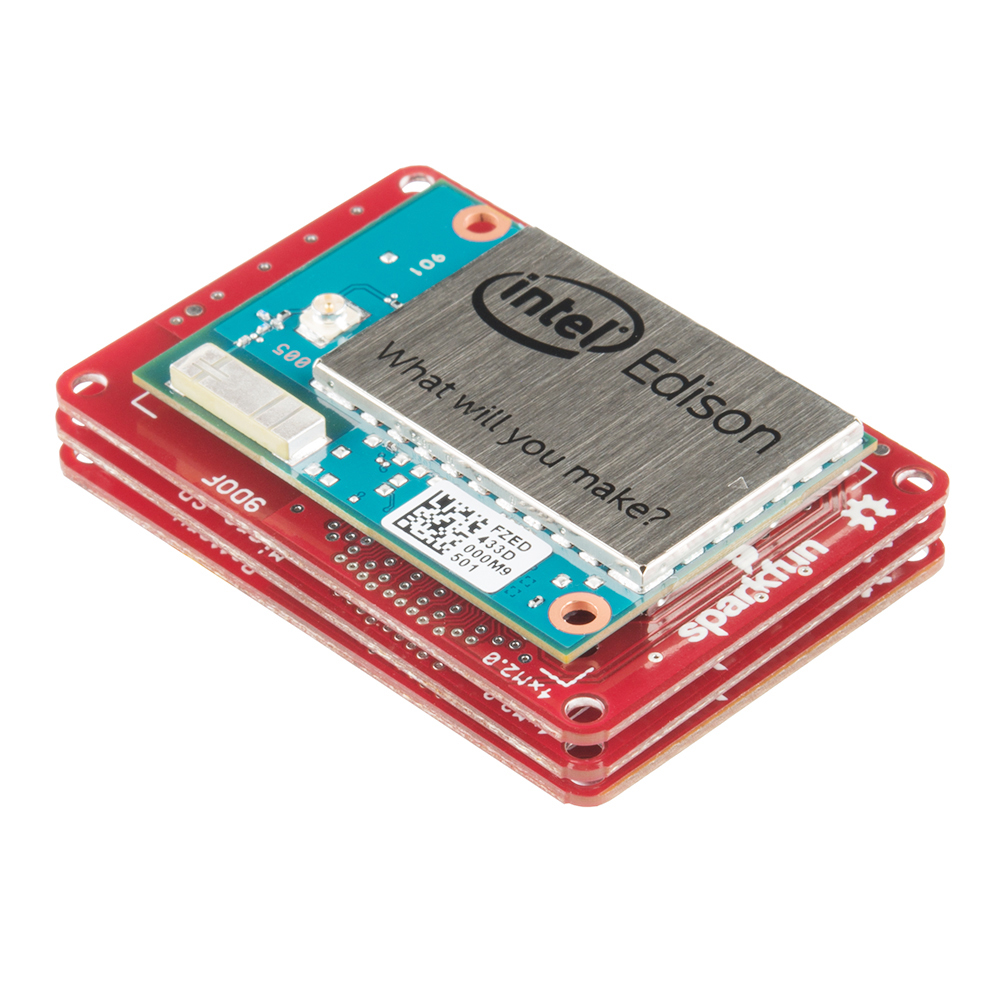Intel Edison Benchmarks
02 Mar 2015I’ve selected the Intel Edison as the embedded Linux processor of choice for this project. But how does it perform? Let’s find out.

The nearest competitor to the Edison is the RasberryPi2, which was released on February 2, 2015 at $35. The Intel Edison was released in September 2014, and costs about $85 depending on configuration.
Feature Comparison
| Metric | RasberryPi 2 | Edison |
|---|---|---|
| Architecture | ARM | Atom (Quark) |
| Cores | 4 | 2 (1) |
| Speed | 900 MHz | 500 MHz (100 MHz) |
| RAM | 1GB | 1 GB |
| USB | 4 Host | 1 USB OTG |
| Display | HDMI | No |
| Ethernet | Yes | No |
| WiFi | No | a/b/g/n |
| Bluetooth | No | 4.0 |
| Onboard Flash | None | 4GB |
| Size | 85x56mm | 45x31mm* |
| Price | $35 | $83* |
* using the Sparkfun base block.
The Edison is interesting in that it contains an embedded Intel Quark processor as well as the main Atom processor.
Commands Used
To measure power consumption and performance I ran sysbench and wget. I ran these in a multi-pane tmux session so that I can test multiple aspects in parallel:
# Download Speed
wget --output-document=/dev/null http://speedtest.wdc01.softlayer.com/downloads/test500.zip
# Upload Speed (by sending characters to the connected terminal)
ls -lR /
# CPU
sysbench --num-threads=1 --test=cpu run
CPU Performance
sudo apt-get install sysbench
sysbench --test=cpu run
sysbench --test=cpu --num-threads=2 run
git clone https://github.com/dai-shi/benchmark-octane.git
cd benchmark-octane
node run.js
Raspberry pi times taken from Adafruit and Mikronauts. Desktop times taken on my Core i7-2600k Sandybridge (January 2011).
| System | Cores | Time (s) |
|---|---|---|
| Edison | 1 | 118 |
| Edison | 2 | 60 |
| PiB+ | 1 | 507 |
| Pi2 | 1 | 295 |
| Pi2 | 2 | 149 |
| Pi2 | 4 | 74 |
| i7 | 1 | 7.5 |
| i7 | 2 | 3.7 |
I also ran JS Octane tests:
| System | Score | Time (s) |
|---|---|---|
| EdisonJS | 949 | 331 |
| Desktop | 17363 | 40 |
Power Consumption
I tested this with a stack of Edison blocks:
- Edison
- Base Block
- SD card block (no SD)
- I2C block
- GPIO block
- PWM block
- 9DOF block
The stack was powered from USB through the “console” input. Except for the base block, nothing was connected to the stack, including no SD card. For measuring power consumption I’m using a USB inline power meter.
| Power (mW) | Current (@5v) | CPU | WiFI |
|---|---|---|---|
| 0.22 | 44 | idle | connected, idle |
| 0.38 | 76 | 1 CPU | connected, idle |
| 0.45 | 90 | 2 CPU | connected, idle |
| 0.75 | 150 | 2 CPU | Rx/Tx |
Note that running just the Rx/Tx tests resulted in near 100% CPU consumption, so I wasn’t able to accurately measure WiFi power without the CPU cost as well.
For comparison, this Mikronauts test measured the power consumption of a RasberryPi 2 at 310mA average and 450mA maximum (at 5v).
Conclusion
The Intel Edison is a faster and more power efficient processor that the RasberryPi 2, and the higher price point is entirely justified for a the improved specifications.